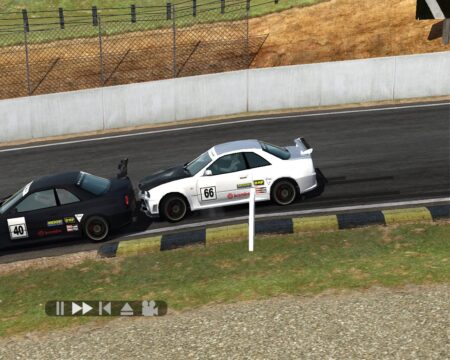
TOCA Race Driver 2
Written by: Rik
Date posted: April 6, 2012
- Genre: Racing
- Developed by: Codemasters
- Published by: Codemasters
- Year released: 2004
- Our score: 8
In an effort to reduce the amount of time and money I spend on games that I have little or no chance of enjoying, and with a particularly drab experience fairly fresh in the memory, I recently resolved to focus my attention (for FFG purposes) more on titles that were a) from one of my preferred genres and b) already in my collection. Driving games are normally a fairly safe bet for me, and when it comes to driving games, there’s no safer bet than something from Codemasters, because they’re generally pretty solid efforts. Plus, we already have some significant, if admittedly nostalgia-based, goodwill for the TOCA series in particular here at FFG. (As a side-note, I was also embarrassed to note that when our friends at Just Games Retro referred readers to our racing section as evidence that we had some significant expertise in this area, the fairly paltry list suggested otherwise).
As plans go, it seemed to be working pretty well, for in the process of playing this game, and preparing notes for the review, it was noticeable that potentially incisive thoughts and comments were coming to me more easily than they have for a while. Just as I was congratulating myself on a job well done, I took a quick look at my review of the previous game in the series and found the reason why: I’d had most of these thoughts already and written them down for a handful of people on the internet to read, if they wanted to, a couple of years ago.
In fairness, though, they are fairly similar games. The basic set-up remains unchanged: the solid foundations of the original TOCA games, boiled down to a more digestible arcade-style structure of short races while retaining a semi-realistic handling and damage model, with a terrible and unnecessary storyline bolted on. Yes, that’s right, there’s still a story: although Race Driver‘s cocky and dislikeable protagonist Ryan McKane has been ditched, the assumption that the presence of some amateurish and blurry cut-scenes in-between races might add to the experience hasn’t. In the spirit of keeping things the same, we’ll follow suit and repeat what we said last time: the story isn’t integral to your enjoyment of the game, you can skip the cut-scenes if you don’t want to watch them, and we’ll relegate the few things we have to say on this front to a separate piece, a link to which can be found at the top of this page.
As you might expect, Race Driver 2 represents an improvement over its predecessor in almost every respect, although for some reason the graphics seemed to be missing a fairly impressive motion-blur effect that was present last time around (I played around with the settings a little but couldn’t come up with any reasonable hypothesis for why this might have been the case) and did quite a good job of masking some of the flatness and low detail of some of the roadside scenery. Otherwise, though, it’s the same but better, and particular attention seems to have been paid to further streamlining some of Race Driver‘s more fiddly and unnecessary features.
So, gone is the need to listen to some pre-race technical advice on how to set up your car and then go through the process of adjusting things according to that advice: here, you just hit ‘race’ and go. The charade of logging onto your laptop to sign contracts with different teams is also gone – you do still have the occasional choice, but it’ll be presented to you in a more straightforward ‘either/or’ manner. Finally, (hooray!) your progress is now saved after every race, and you can return to a game in the middle of a championship rather than having to battle through a number of races at a time (although there is a helpful estimate of how long each championship will take before you start, another plus point).
The career mode is also slightly better balanced than before, with early races being much less forgiving of significant fuck-ups (Race Driver would let you get away with spinning off the track mid-race and allow you to catch up – that’s much less likely here) and really difficult ones not appearing until the very end of the game. There’s a greater variety of vehicles to choose from, and though many of them are variations on a theme (driving on tarmac with some kind of road car) there are some genuine novelties, including racing with trucks and a couple of rallying sections (the latter aren’t quite as good as you’d expect, however, especially considering the developers’ rally heritage). One type of racing that doesn’t feature, though, is the British Touring Car Championship, and while it’s a shame not to have a nod to the series’ history by including it, its absence doesn’t really make a massive difference to non-fans, especially as there are plenty of opportunities to drive saloon cars in other, similar, events.
As in the previous game, your objective varies in each championship, and it’s usually something more realistic and scenario-specific than simply winning or finishing in the top three, instead focusing on achieving a certain position or beating a rival. There’s no qualifying; you simply start in the middle of the grid and have to battle your way to the desired position. And battle is certainly the right word, with a robust and aggressive approach central to success as you target the AI opponents’ cautious approach to cornering and sacrifice your own vehicle’s bodywork in the process. Fortune favours the bold and the brave, but not the recklessly stupid, and it’s definitely not a case of smashing car out of your way without worrying about the consequences, as such a strategy will usually result in a damaged vehicle and an unsuccessful race (as it should).
It might be said that for all Race Driver 2‘s sim-lite handling, and a damage model that doesn’t allow you to simply bounce off scenery or other vehicles, the fact that you’re able to make up so many places so quickly isn’t exactly realistic. But then, having races that last for an average of around seven minutes is hardly representative of real-life racing either, and if you’ve only got three or four laps to play with, you’ve got to be able to overcome fairly steep odds in that time somehow.
It’s true that you can muddle through some races without ever really getting the hang of the circuit or vehicle in question, and progress under such circumstances does sometimes feel a little cheap, and much less satisfying than when you actually get into a proper rhythm and put in a series of mistake-free laps, but on the whole you do genuinely feel like you’re participating in a proper, competitive race each and every time you’re on the track. Yes, the scenarios are a little contrived and perhaps, if one were to stick to one particular racing discipline, with longer races, for a more sustained period of time, a whole host of flaws might reveal themselves.
I’d argue, however, that coming up with the scenarios in the first place, and designing the game in such a way that everything works and is well-balanced, is all you can really ask for here. Frankly, racing cars at high speed is hard. If you’ve ever played a proper racing sim, you’ll be familiar with the need to learn each and every circuit before you race and to be able to maintain concentration for significant periods of time to have any chance of success. What Race Driver 2 offers is the edited highlights, balancing a requirement to learn the requisite skills against the need to offer an accessible experience. And even on a five-lap race, there’s always potential for a brief loss of focus to ditch you straight into a gravel trap.
Although the story adds nothing to the game, the structure beneath the main campaign and the associated challenges certainly show more imagination than the usual humdrum structure of the championship modes of most arcade racers. There’s still room for improvement: for example, you simply have a single objective for each championship, and there’s never any acknowledgement if you happen to significantly improve upon what’s expected (say you win when you only needed to finish fourth, no-one really seems to care) and to have a more dynamic and responsive campaign would certainly be welcome. And, as we said already, the cut-scenes could safely be ditched altogether.
The series has, of course, continued, and it may well be that such improvements have already been delivered. However, I’m not in any rush to find out, not because Race Driver 2 isn’t extremely well put together, but because it offers so much that by the time you’ve had your fill you won’t have any room left for any more of the same. And, given that this isn’t vastly different from its predecessor, you’d have to think that’s what the next game is likely to offer, too. That’s one slight note of caution though, set against an otherwise hearty recommendation.

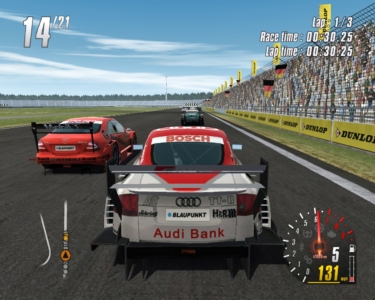
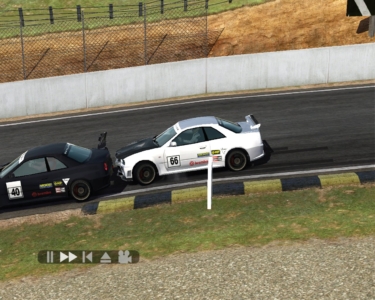
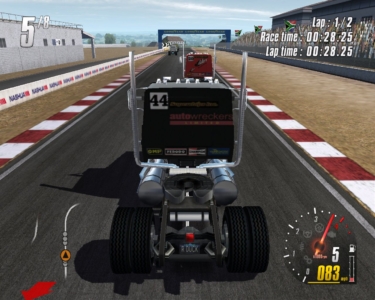
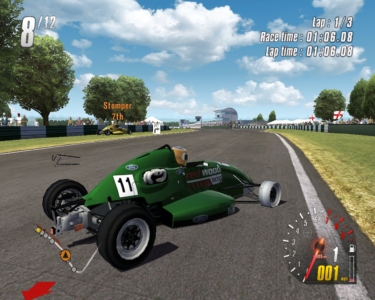

 Posts
Posts